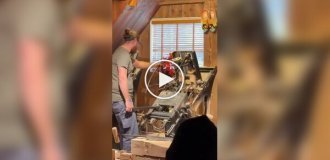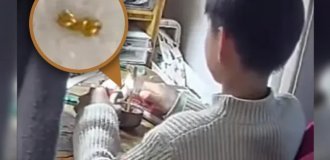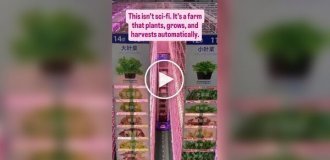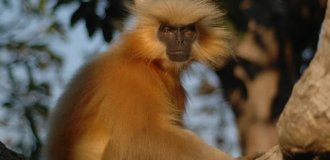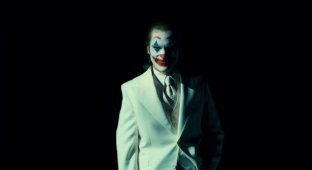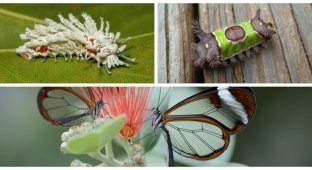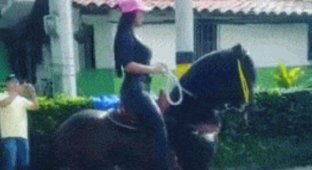5 little-known interesting facts that make you look at our world in a new way (12 photos)
How beautiful is the world around us. And it is also so wonderful. 
After all, small discoveries and interesting facts are found literally at every step and allow us to learn more about the amazing multifaceted life.
1. Small crap 
Fignya melkaya is a butterfly from the slug family. It was described in 2009 by our entomologist Alexey Solovyov from the Ulyanovsk Pedagogical University together with his colleague from Germany Thomas Witt.
The name is derived from the words "crap" and "small". The insect is really miniature: the wingspan of males does not exceed 2 centimeters. 
First Fignya melkaya was discovered on Mount Fansipan in northern Vietnam, and then it was found in Sichuan Province in southwestern China. By the way, the scientist, with the humor typical of pioneers, called another of his discoveries Barabashka melkaya (Small Barabashka).
2. A Wonderful Wonder 
Tenniel's illustration
John Tenniel is an English artist and caricaturist. The first illustrator of Lewis Carroll's books "Alice in Wonderland" and "Through the Looking-Glass", whose illustrations are now considered canonical. 
Still from the 1933 film "Alice in Wonderland"
Among the characters of the eternal book is the Mock Turtle (in the original, the name sounds like Mock Turtle). The illustrator depicted it with hooves and a cow's head. But this was not a spontaneous decision. The fact is that in Britain in the 19th century, they invented the so-called fake turtle soup. It was made from a calf's head and legs. Accordingly, compared to the original delicacy, such a dish cost much less. When Alice asks the Queen "who this" turtle is, she explains: this is what they make the mock turtle soup from. This dish was not made from turtle meat, but from veal.
3. Red Sprite 
During some thunderstorms, red lightning bolts called sprites shoot up into the upper atmosphere. Red lightning is an intriguing weather phenomenon associated with some very severe thunderstorms. While a normal lightning bolt travels down from the clouds to the ground, a sprite shoots up into the upper atmosphere. 
Red sprites over the Atacama Desert, Chile, 2019
However, red lightning only lasts for a millisecond or so, making it difficult to observe and study. Given their elusive nature, “sprite” is a very accurate and appropriate name. Although it is actually an acronym that stands for “Stratospheric Perturbations Resulting from Intense Thunderstorm Electrification.” Like regular lightning, it is caused by a build-up of electrical charge in clouds, but in this case the excess charge is ejected into the ionosphere - about 80 kilometers up. 
The first color image of a sprite, taken in 1994
Red lightning is difficult to see from the ground because it occurs high above the cloud layer.
Sprites are usually red and can be shaped like a jellyfish or a carrot. They can be enormous compared to a regular lightning flash, often reaching 50 kilometers across.
Like many weather phenomena, red lightning can in principle occur on other planets with an atmosphere, not just on Earth.
4. The Artist's Riddle 
In 1973, an X-ray analysis of the painting "The Wounded" by French artist Gustave Courbet, painted between 1844 and 1854, revealed that there is more under the outer layer. And not even one, but two.
The first depicts an unfinished portrait of a young woman. The second portrait shows two lovers, one of whom was Gustave himself in his youth. The artist depicts himself as a young man sleeping at the foot of a tree, with a beautiful woman resting her head on his shoulder. It is believed that the portrait depicts his lover, Virginia Binet. She was the only woman with whom Courbet had a long-term relationship, and who gave him a son. 
This first composition was probably painted around 1844. After a love breakup in 1854, Courbet resumed work on the painting and completely changed the first image: he added a beard and more mature features. He removed the girl and painted a red line on the white shirt to indicate the wound in the heart. The blood stain on the shirt at the level of the heart and the sword lying on the left indicate a duel that did not go as expected.
In a letter to his friend Proudhon, Courbet explains that "true beauty can only be found in suffering... That is why my dying duelist is beautiful."
5. Uniform Shapes 
The shapes of McDonald's chicken nuggets may seem random, but they are not. In fact, for the last few decades, they have existed in the same four types. And that's not all - each shape of McDonald's chicken nugget has its own name. 
The four shapes of McNuggets are known as the boot, the ball, the bow tie, and the bell. This way, the company ensures that the chicken is thoroughly and evenly cooked, and the breading is evenly fried. The chosen shape is also convenient for dipping in portioned sauce.
